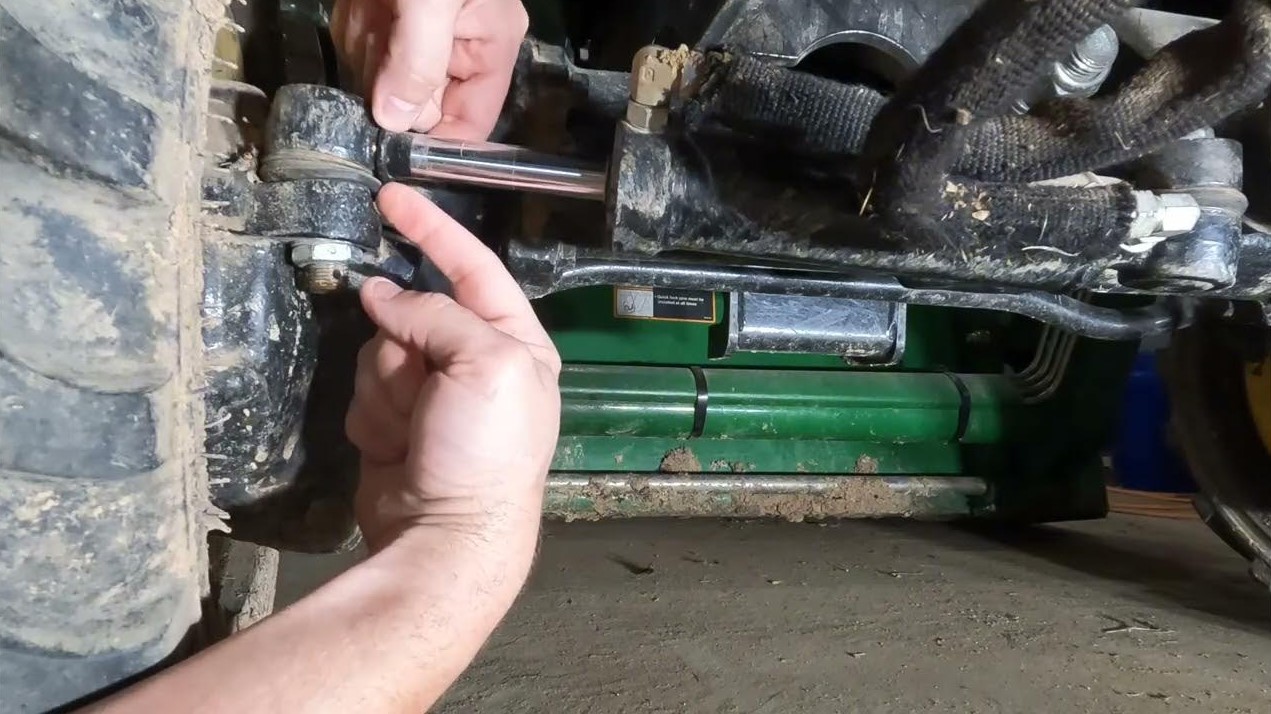Hello, first-time poster here, though I’ve been following the forum for a while. I searched around but couldn’t find anything related to my issue.
I own a 2015 John Deere 1025R with 250 hours of use. Lately, I’ve noticed that the steering has become harder to turn, which became more noticeable after trying my neighbor’s 1025R. His tractor is the same model, except he has R4 tires while mine has turf tires.
I replaced the hydraulic oil and filter at 200 hours. I’ve checked the tire pressure, and the resistance in steering persists whether the front wheels are on the ground or lifted. When I detach the steering cylinder from the axle, the axle moves without any trouble.
I contacted my local dealer, and they quickly suggested that the steering cylinder is faulty, which would cost nearly $700 (I’m in Canada).
Could anyone recommend some troubleshooting steps to figure out what the real problem might be? Is it really as simple as just blaming the cylinder? I’d prefer to keep using it as-is unless there’s a risk of causing more damage.
Personally, I don’t think the issue is with the steering cylinder. My suspicion is the steering valve, located under the dashboard where the steering wheel connects. The steering system on the 1 Series is quite straightforward, and if there’s stiffness, the issue likely lies with one of two things once mechanical binding is ruled out, as you’ve done.
While a steering cylinder can fail, it usually manifests as a leak rather than becoming difficult to operate, unless it’s significantly bent. In some cases, a problem can arise with the piston seals, leading to what’s known as a bypass, where pressure escapes to the opposite side and disrupts the direction of force. Given your tractor’s hours, I doubt this is the case. You can test it using hoses and the loader’s SCV with the method described below, but if you’re not experienced, it might be simpler to take the cylinder to a hydraulic shop for testing. They might check it for free if they do the repairs or charge around $20 if there’s no issue.
The steering valve, or orbital control valve, directs fluid to the steering cylinder based on how much you turn the wheel. It can be rebuilt, though few people handle such repairs, so replacing it might be necessary if this is the source of the issue. If you turn off the tractor and the steering feels similar to what you’re experiencing, but worse, then the problem could lie here. The fluid might not be flowing correctly through the valve, preventing it from reaching the cylinder.
Another possibility, albeit unlikely, is an issue with the fluid itself, like something contaminating it during the change. However, since the fluid passes through a pickup screen and pump, this scenario seems doubtful.
In the U.S., a new cylinder costs around $400, and a reputable shop could rebuild it for about $100. The steering valve would be approximately $750, and finding someone to rebuild it could be difficult.
Thanks for the response! When the tractor is off and the front wheels are lifted, they do turn, but it’s quite difficult. Shouldn’t it be easier to turn with the power off?
I doubt there’s any problem with the fluid because the loader and 3-point hitch are working perfectly fine, with no noticeable changes.
No, it should indeed be difficult to turn when the tractor is off. What I was getting at is that if the jerky sensation you’re experiencing while steering persists even when the engine is running (just to a lesser extent), it might suggest a problem with the steering valve. This could mean the fluid isn’t flowing correctly through the valve or isn’t reaching it as it should.
However, if the steering wheel turns smoothly while the tractor is running, but the wheels still don’t steer properly, then the issue might be related to the bypass in the steering cylinder.
Got it.
When the power is on, the steering is smooth and steady but has more resistance than expected. With the power off, it becomes jerky and very hard to turn.
Based on these observations, it seems like the issue might not be clear-cut enough to pinpoint right now. Since the steering is smooth when the tractor is running, it indicates that the flow to the steering system is adequate. If the flow was restricted, you would likely feel it catching at certain points, similar to what happens when steering at low RPMs while using the loader.
At this stage, you have two options:
- Leave it as is for now
- Get the cylinder checked at a local hydraulic shop. If they don’t find any problems (which seems likely), then the issue is probably within the orbital control valve. In that case, it might be best to wait until the steering becomes significantly worse or too difficult to operate, and then consider replacing the valve.

